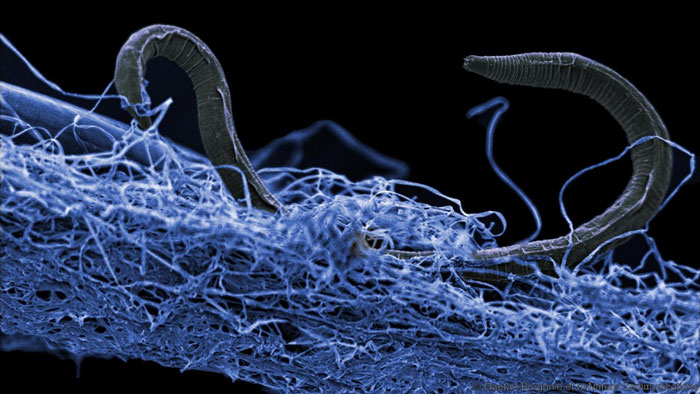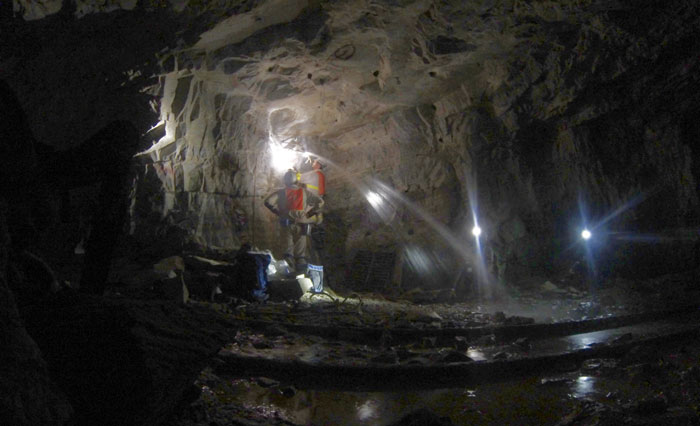After ten years of study, and hundreds of holes drilled into the earth, scientists have found an entire new biosphere of life underground that is two times the size of earths oceans.
The carbon mass is that of 245-385 times the carbon mass of all humans on earth.
What does this mean?
It means that 70% of all earth’s life actually lives beneath the surface.
This is an amazing discovery by the Deep Carbon Observatory collaborators. A community of more than 300 researchers in 34 countries. The search for living organisms miles beneath earth’s surface is fascinating. However just like drilling holes in a plant, it tends to shorten the lifespan. Hopefully the impacts are similar to getting blood drawn.
More from the Homestead Guru: Grow Food Year Round in a $300 Underground Greenhouse
With all the holes we have drilled into earth, I really hope we don’t see too many negative effects. We are all aware of what drilling for earth blood (oil) does to the oceans. We have seen the coast of Texas die. The water is dark with leaks and wells that are supposedly capped. Still the “fish kills” continue and nobody blinks an eye.
While the scientists state they use sampling devices that maintain pressure to preserve microbial life (none thought to pose any threat or benefit to human health), I would still definitely question the safety of earth while continuing to drill for life. There is life to think about on the surface as well, and I don’t want to lose sight of that, while exploring earth.
“Exploring the deep subsurface is akin to exploring the Amazon rainforest. There is life everywhere, and everywhere there’s an awe-inspiring abundance of unexpected and unusual organisms. ” Mitch Sogin, co-chair of DCO’s Deep Life community.
https://deepcarbon.net/life-deep-earth-totals-15-23-billion-tonnes-carbon

A nematode (eukaryote) in a biofilm of microorganisms. This unidentified nematode (Poikilolaimus sp.) from Kopanang gold mine in South Africa, lives 1.4 km below the surface. Image courtesy of Gaetan Borgonie (Extreme Life Isyensya, Belgium)
The team has drilled 2.5 km into the surface under the ocean, and up to 5 km on different continents. They have sampled microbes from mines and bore holes. They have used the information they have gathered to create models of the ecosystems they have discovered.
More from the Homestead Guru: The Zombie Apocalypse is Happening Now. Are You Infected?
The studies from 100s of sites have been able to estimate a size of the deep biosphere – 2 to 2.3 billion cubic km (almost twice the volume of all oceans)—as well as the carbon mass of deep life: 15 to 23 billion tonnes (an average of at least 7.5 tonnes of carbon per cu km subsurface).
Their work also states that they can determine environments that could support extraterrestrial life!

Cara Magnabosco and colleagues collect ancient water samples 1.3 km deep within the Beatrix Gold Mine, South Africa to investigate the diversity and abundance of deep microbes. Image courtesy of Gaetan Borgonie (Extreme Life Isyensya, Belgium) and Barbara Sherwood Lollar (University of Toronto, Canada)
Some of the key discoveries about life underground include:
- “A subterranean Galapagos” that includes members of all three domains of life: bacteria and archaea (microbes with no membrane-bound nucleus), and eukarya (microbes or multicellular organisms with cells that contain a nucleus as well as membrane-bound organelles) .
- Two types of microbes—bacteria and archaea—including “dark matter”that dramatically expands our knowledge of the tree of life.
- Deep microbes surviving on nothing but the energy from rocks.
- Geogemma barossii a single-celled organism thriving in hydrothermal vents on the seafloor. Its cells, tiny microscopic spheres, grow and replicate at 121 degrees Celsius (21 degrees hotter than the boiling point of water).
- Life 10.5 km from the ocean surface, a depth of extreme pressure; at 4000 meters depth.
Molecular studies raise the likelihood that microbial dark matter is much more diverse than what we currently know it to be, and the deepest branching lineages challenge the three-domain concept introduced by Carl Woese in 1977. Perhaps we are approaching a nexus where the earliest possible branching patterns might be accessible through deep life investigation.
https://deepcarbon.net/life-deep-earth-totals-15-23-billion-tonnes-carbon
Our studies of deep biosphere microbes have produced much new knowledge, but also a realization and far greater appreciation of how much we have yet to learn about subsurface life,” says Rick Colwell, Oregon State University, USA. “For example, scientists do not yet know all the ways in which deep subsurface life affects surface life and vice versa. And, for now, we can only marvel at the nature of the metabolisms that allow life to survive under the extremely impoverished and forbidding conditions for life in deep Earth.
https://deepcarbon.net/life-deep-earth-totals-15-23-billion-tonnes-carbon
There are a lot of questions that come from this research.
- How does deep life spread? Up through the cracks in rocks, or down towards the hotter places of inner earth?
- How can deep life be similar in South Africa as it is in Seattle, Washington?
- What does the roll of earthquakes play, and are large communities of deep life able to migrate through earths movements?
- Did life start deep inside earth, and move towards the surface, or did it start in a pond and migrate down?
- How do subsurface microbial “zombies” reproduce, or live without dividing for years?
- Is methane, hydrogen, or natural radiation from uranium and other elements the most important energy source for deep life?
As we research and study our findings, there are a few things to think about as we discover new life on earth.
My Traffic Estimate



